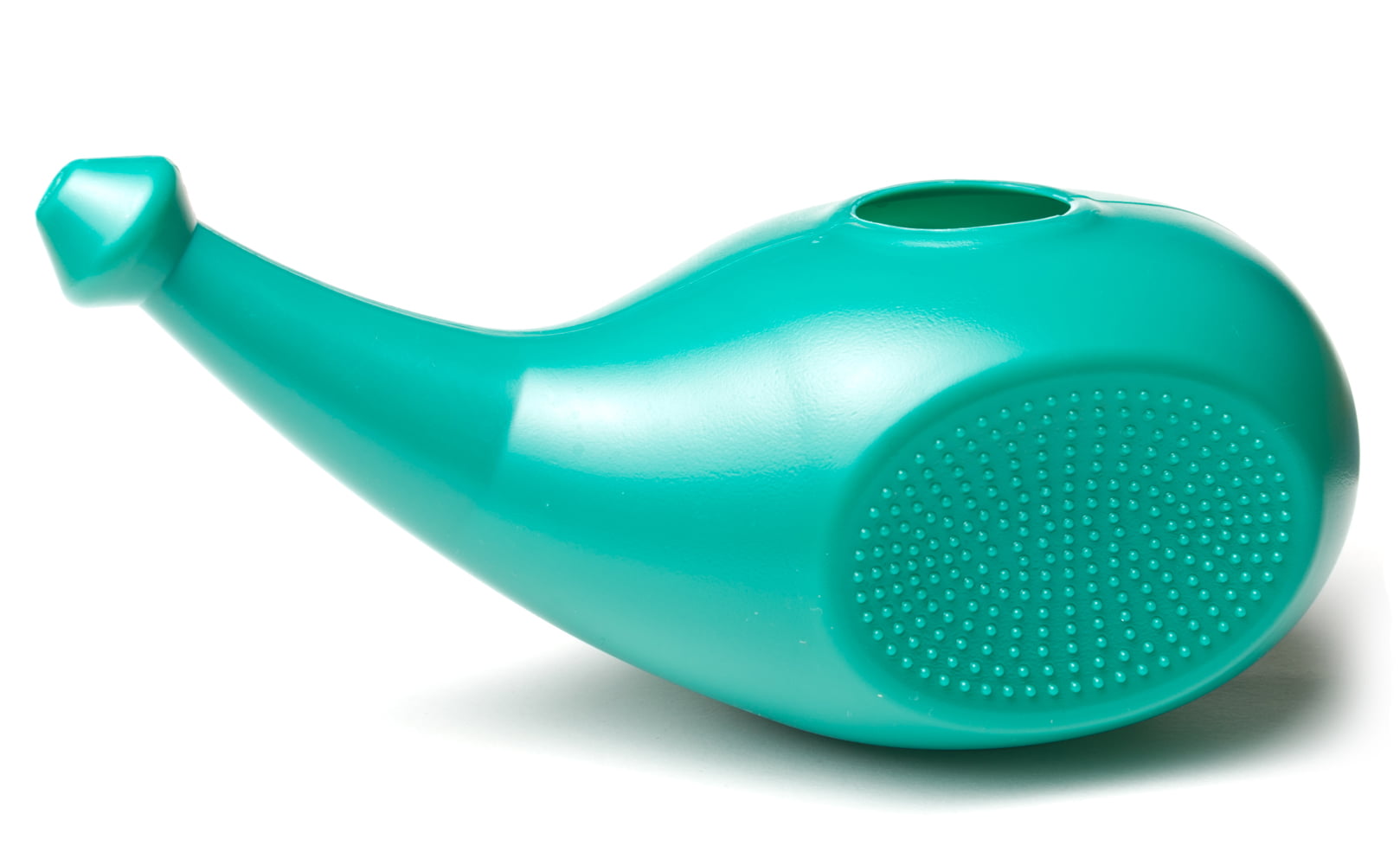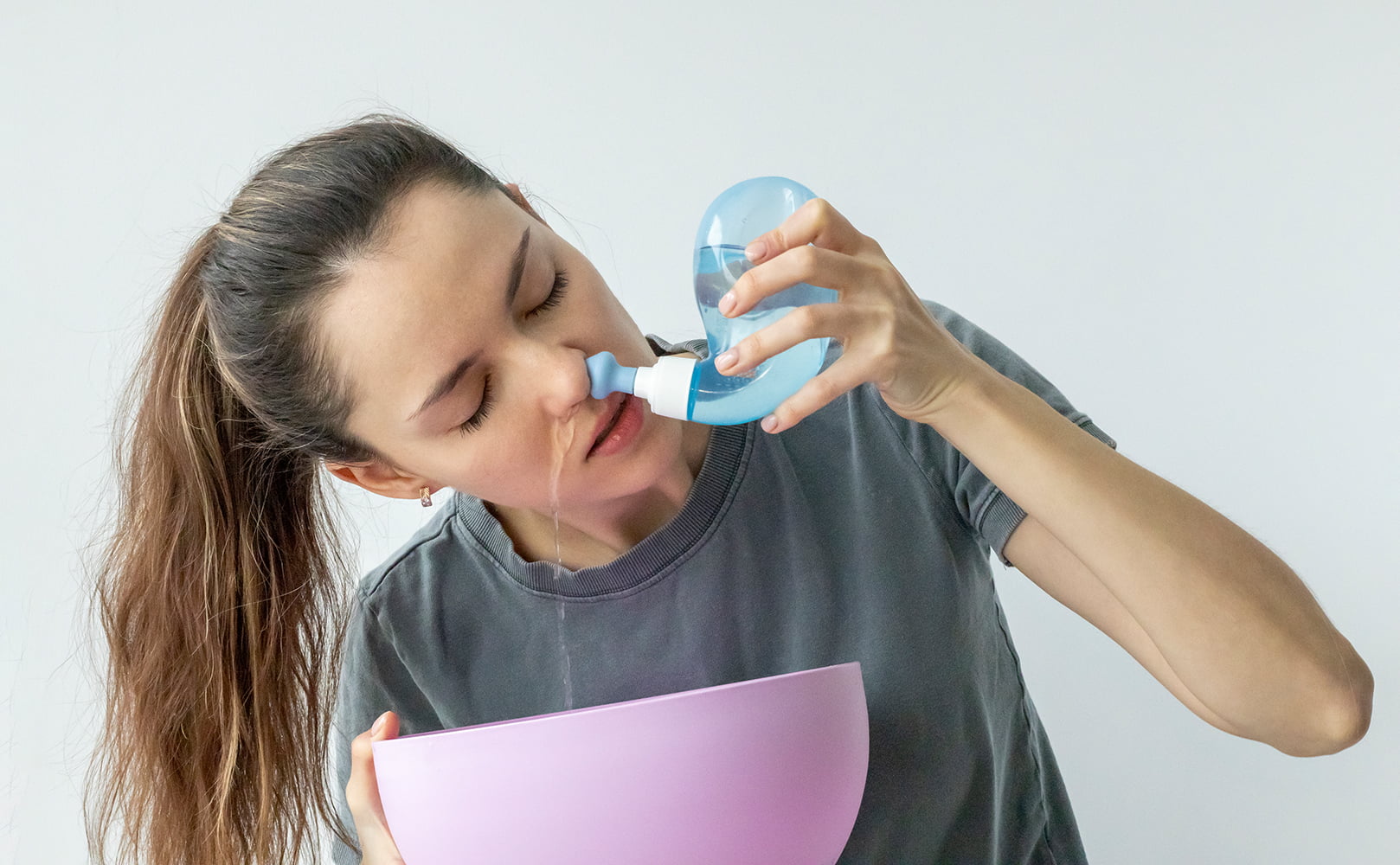Is Reverse Osmosis Water Safe for Neti Pots (Nasal Irrigation)?
Written by: Alexandra Uta // Last Updated: Sep 1, 2023
This page may contain affiliate links. If you buy a product or service through such a link we earn a commission at no extra cost to you. Learn more.
Nasal irrigation using a neti pot is becoming quite popular.
If you’re interested in trying it, you need to approach it with safety in mind – and choosing the right type of water to fill your neti pot with is the most important step.
If you have a reverse osmosis system at home, you’re probably tempted to use that, but is it a good idea?
Key Takeaways
- Yes, reverse osmosis water is safe for neti pots and nasal irrigation.
Is Reverse Osmosis Water Safe for Neti Pots?
So, is reverse osmosis water safe for neti pots?
Yes, reverse osmosis water is perfectly safe for neti pots. In fact, it’s one of the preferred methods for purifying water for this purpose. If you already have a reverse osmosis system, you’re all set for doing nasal irrigation, and you don’t have to spend any extra money buying special water or any other devices for treating your RO water.
Some people seem concerned about the use of purified water for this purpose due to a shocking news report from 2018. Back then, a woman had reportedly died after contracting a deadly amoeba after doing nasal irrigation with water filtered through a Brita filter.
The reality is that this story has nothing to do with reverse osmosis, and the woman had likely overestimated the capabilities of her water filter. The woman had apparently used regular tap water, only running it through a Brita filter and nothing else, believing that this would sterilize the water sufficiently.
While Brita filters do remove some water contaminants, they are very far from the thorough purification provided by reverse osmosis. Reverse osmosis eliminates biological contaminants very effectively, so it would have provided sufficient purification in that case.
Why RO Water Is Safe for Nasal Irrigation
The main requirement for water used for nasal irrigation is that it’s sterile. There are different ways to produce or obtain sterile water, and it mostly comes down to personal preference. In any case, as long as you can guarantee that water has been thoroughly purified, it’s good for use in a neti pot – and that’s exactly where reverse osmosis shines.
The main concern when it comes to safe nasal irrigation is the presence of certain bacteria, which is one category of contaminants that reverse osmosis deals with very well.
Contaminants Removed By Reverse Osmosis
It’s not just about bacteria though – reverse osmosis has a deserved reputation for being one of the most thorough methods for purifying water available on the market right now. The process can remove various contaminants from water, including:
- Protozoa, such as Giardia and Cryptosporidium
- Bacteria, such as Salmonella and E. coli
- Sodium
- Chloride
- Copper
- Lead
- Calcium
- Magnesium
- Nitrate
This list is far from exhaustive. It only points out some of the more commonly discussed impurities present in the average domestic water supply. The full list of contaminants removed or reduced by reverse osmosis is quite long, so if you’re concerned about any specific contaminant, you should check if it’s listed.
Other Types of Water That Are Safe to Use in a Neti Pot
As we mentioned above, the most important thing with neti pots is to use water that’s been properly sterilized. Other than reverse osmosis, this leaves you with a couple of options, for example boiling or distilling your water. These two options, along with reverse osmosis (and other methods of filtration that can remove bacteria) are the only approved choices by the FDA.
A note about filtered water – you can’t just use any random type of water filter. The tap water story from above should be a clear indication of the potential problems with that. You must use a treatment method that’s guaranteed to remove all biological contaminants, and that limits your range of options.
Bottled Water
Bottled water can be used with neti pots if it is specified on the label that the water was distilled or sterilized in any other way.
Boiled Water
According to the FDA, you can boil water for 3-5 minutes and then cool it for a couple of minutes to make it safe for nasal irrigation. Make sure to use your boiled water right away. If you have to store it, it shouldn’t be for longer than 24 hours. Even then, you must make sure to use a sterilized, airtight container to prevent any contaminants from entering it.
It should go without saying that you should carefully clean the dish you’re using to boil your water beforehand. Otherwise, contaminants from the dish might make their way into the water once it cools down.
Distilled Water
Distillation is another viable option. While you can technically do it yourself at home, it’s a bit inconvenient to set everything up, and it’s usually a better idea to just buy distilled water at the store. Note: this is the only acceptable form of bottled water that you can use for nasal irrigation! Don’t be tempted to buy regular bottled water, even if it’s marketed as filtered. If the label doesn’t say anything about distillation or sterilization, stay away.
What Are Neti Pots and How Do They Work?
A neti pot is a device used for nasal irrigation. It usually resembles a teapot with a strangely shaped spout. The device is filled with a saline water solution, which is then forced through one nostril and out the other, flushing out mucus as it passes through. The use of saline water is important – but you need to start with properly sanitized water to ensure that your saline solution will be safe for nasal irrigation in the first place.
How to Use One
To use a neti pot, you must first prepare your saline water solution. To do that:
- Mix 3 teaspoons of salt, free of iodide and any preservatives, with 1 teaspoon of baking soda. Store the mix in a separate container.
- Mix 1 teaspoon of the prepared mixture with 8 ounces of sterile, distilled, or filtered water. Use half a teaspoon if preparing the solution for a child instead.
Always use containers that have been cleaned and sterilized thoroughly. You can store the mixture of baking soda and salt for longer, but you must always keep it in a dry, cool place, away from direct sunlight exposure. Be extra careful about allowing any moisture in the container. The same goes for the container you’re using to mix the saline solution. If possible, mix it directly into the neti pot to minimize the number of extra surfaces the water comes in contact with. However, due to the physical design of most neti pots, that’s usually not very convenient.
Now that you have your mix, you’re ready to start the process.
- Lean over your sink and tilt your head slightly sideways. Try to keep your forehead and chin at the same level, otherwise water might flow into your mouth.
- Open your mouth and start breathing through it.
- Insert the neti pot’s spout into the nostril which is currently higher up, and tilt the pot so that water starts pouring out.
- Keep water running for some time until you feel that your nostril is clean.
- Tilt your head to the other side and repeat the process for the other nostril.
Always make sure to clean and sanitize your neti pot after every use. Follow the manufacturer’s guidelines to ensure you’re not missing anything. But in general, you should clean and rinse your neti pot after you’re done using it, wipe it down with a paper towel, and let it air dry. We’ve covered that in more detail further in this article.
Are Neti Pots Safe?
Neti pots are perfectly safe, provided you take care to use them correctly and you only use properly sterilized water for the purpose. Any issues associated with neti pots can usually be traced to improper use or care for the neti pot. In many cases, people simply have the wrong idea of what constitutes “clean” water, and/or underestimate the risks associated with bacterial infection. The FDA has approved neti pots as a safe method for nasal irrigation, and recommends using them as long as all of the above points are observed.
And of course, pay attention to the neti pot you’re buying in the first place. The market is littered with low-grade products that haven’t been properly tested and are made of dubious materials. It’s always worth spending a few extra dollars for the peace of mind that your neti pot was manufactured with care and responsibility.
Neti Pot Care
You must always clean and dry your neti pot carefully after every use. Otherwise, you risk having bacteria grow on/in it. You don’t need to be very thorough in cleaning your neti pot. Simply wash it with hot water and a little bit of soap, then wipe it down with a paper towel and let it air dry.
It can seem a bit annoying to have to do this after every single use of your neti pot, but being careless about cleaning and caring for your neti pot is the number one way to get an infection from it. If you pay attention to those points and take good care of your pot, there’s nothing that can really go wrong in the long run.
If you have any thoughts about the question, can you use reverse osmosis water for nasal irrigation, please don’t hesitate to leave a comment below!
Information provided on BOS is for educational purposes only. The products and services we review may not be right for your individual circumstances.
We adhere to strict editorial guidelines. Rest assured, the opinions expressed have not been provided, reviewed, or otherwise endorsed by our partners – they are unbiased, independent, and the author’s alone. We fact-check all content for accuracy. It is accurate as of the date posted and to the best of our knowledge.



